new posts in all blogs
Viewing: Blog Posts Tagged with: Graphic Novels, Most Recent at Top [Help]
Results 1 - 25 of 799
How to use this Page
You are viewing the most recent posts tagged with the words: Graphic Novels in the JacketFlap blog reader. What is a tag? Think of a tag as a keyword or category label. Tags can both help you find posts on JacketFlap.com as well as provide an easy way for you to "remember" and classify posts for later recall. Try adding a tag yourself by clicking "Add a tag" below a post's header. Scroll down through the list of Recent Posts in the left column and click on a post title that sounds interesting. You can view all posts from a specific blog by clicking the Blog name in the right column, or you can click a 'More Posts from this Blog' link in any individual post.
 Okay! I’ve been looking forward to this particular list for a while. But first, a quick note on what we’re calling these things. Not too long ago the very funny Glen Weldon wrote a piece for an NPR blog about whether or not we should be calling these books “comics” or “graphic novels”. Weldon is firmly in the comic camp, and he makes a strong case. He is not, however, a librarian, and so he can be forgiven for not knowing his history on this one. The term “graphic novel” was embraced early on by librarians to distinguish the better bound GNs from the flimsy, circulate-them-once-and-they’re-done comics that abounded. These days GNs and trades are almost more common than floppies, and so there’s been a call to call comics comics again. I was tempted to just call all of this that woefully technical term “sequential art” and be done with it . . . but how would that be different from picture books, eh whot? No, we’re splitting the difference today. Whether you’re a graphic novel enthusiast or a comic book reader, I think you’ll find something for everybody on this list of some of the best from 2016 for kids:
Okay! I’ve been looking forward to this particular list for a while. But first, a quick note on what we’re calling these things. Not too long ago the very funny Glen Weldon wrote a piece for an NPR blog about whether or not we should be calling these books “comics” or “graphic novels”. Weldon is firmly in the comic camp, and he makes a strong case. He is not, however, a librarian, and so he can be forgiven for not knowing his history on this one. The term “graphic novel” was embraced early on by librarians to distinguish the better bound GNs from the flimsy, circulate-them-once-and-they’re-done comics that abounded. These days GNs and trades are almost more common than floppies, and so there’s been a call to call comics comics again. I was tempted to just call all of this that woefully technical term “sequential art” and be done with it . . . but how would that be different from picture books, eh whot? No, we’re splitting the difference today. Whether you’re a graphic novel enthusiast or a comic book reader, I think you’ll find something for everybody on this list of some of the best from 2016 for kids:
2016 Great Graphic Novels & Comics for Kids
Anna & Froga: Out and About by Anouk Ricard
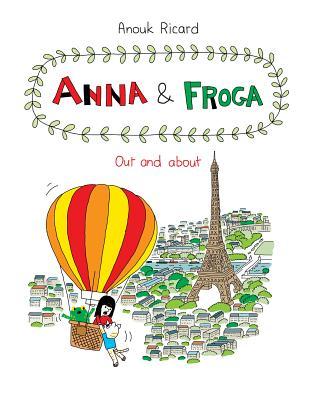
Is so French! I was very much taken with this odd little book, the second in the Anna & Froga series to come to America. There’s an adult quality to the feel of the book, but it doesn’t have that misanthropic undercurrent you sometimes get in imports. Instead, it’s really rather sweet. And I was particularly taken with the tale about the vampire next door.
Ape and Armadillo Take Over the World by James Sturm

Hooray! First off, kudos to Sturm for coming up with what may well be my favorite original animal pairing of the year. Apes and armadillos! Magic! If you’re looking for a good friendship tale, this entry into the TOON Books oeuvre will hit the spot. With a minimal number of words, you get two fully-fleshed out characters in an adventure ideal for readers who are on the cusp of reading full chapter books.
Bera the One-Headed Troll by Eric Orchard

I didn’t know what to expect when I picked this book up and I was left never quite knowing where the plot was going as I read it. And I CERTAINLY didn’t expect the ending either! It’s just your average hero’s quest, except the hero in question is a pumpkin gardener who keeps searching for bigger, better heroes to do the job for her. I loved the pacing, and you get used to the art pretty quickly. Loved the heroine too. Bera doesn’t adhere to your stereotypical feminine tropes. She’s just a one-headed troll with a job to do. Go, Bera!
The Birth of Kataro by Shigeru Mizuki

Oops! Here it comes again for a third pass! After popping up on my International Imports and Oddest Books of the Year lists already, you’d think I’d be tired of old Kitaro by now. And you would be WRONG! Just to sum up once more, you have ancient Japanese legends mixed with a manga art style resulting in a crazy mash-up of an unlikely hero surviving a host of creepy crawly monsters. Better read the author’s note before you begin.
Compass South by Hope Larson, ill. Rebecca Monk
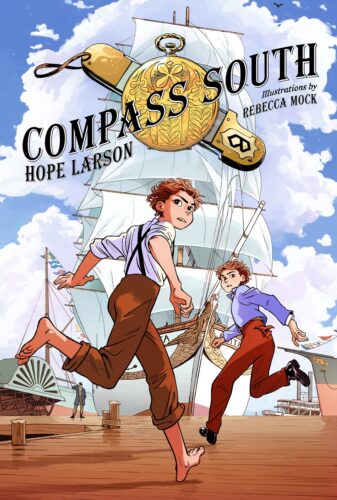
Hope Larson! Big time fan over here. When people ask for Raina Telgemeier readalikes I always point them to Chiggers though I’ve a particular fondness for Mercury as well. This latest book was drawn by someone else entirely, but you definitely can tell that Larson’s behind the ideas. And what’s not to love? One-eyed women with shell-encrusted eyepatches. Danger on the high seas. Two pairs of twins. Danger, near death, disease, maps, the whole kerschmozzle! If you’re looking for adventure, this is the start to a promising series. Extra points if you’ve discovered Hope’s new Goldie Vance comic series as well.
The Heartless Troll by Oyvind Torseter
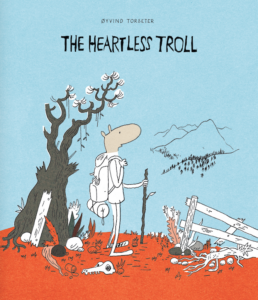
Kitaro isn’t the only GN here that’s appearing on multiple lists. Torseter did a fine and dandy job with his epic quest book. The fact that it is physically larger than your average comic shouldn’t put you off. It sort of has a Bone-like quality to it too, with its simply drawn hero and elaborately detailed villain. Jeff Smith, I suspect, would be a fan.
Hippopotamister by John Patrick Green
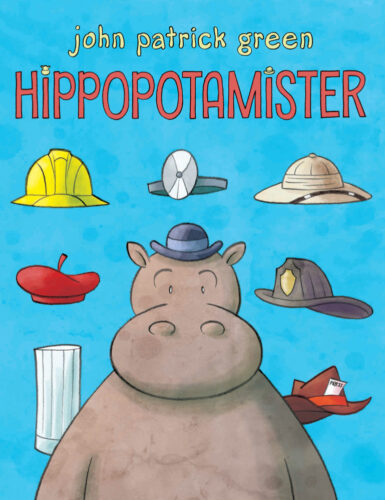
A book so popular in my family it made it onto my Christmas card this year. Truth. My five-year-old loves it. My two-year-old loves it, and why not? This is what people talk about when they talk about tight plotting in books for younger readers. And talk about a hero’s quest! Hippopotamister might as well be singing a Disney-esque “I want” song at the story’s start. He enters the world, succeeds, fails, and then uses his knowledge to better the place where he got his start. Plus the red panda is funny.
Kid Beowulf by Alexis Fajardo
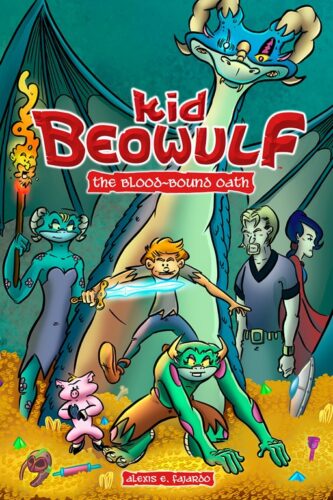
Speaking of quests, the remarkable thing about Fajardo’s first book in the “Kid Beowulf” series is just how sprawling, epic, and ambitious it is. There are graphic novel readers out there that need and crave comics with huge backstories, countless characters, as well as a bit of real history. This is the book you hand them. And then the next. And the next. And the next . . .
King of Kazoo by Norm Feuti
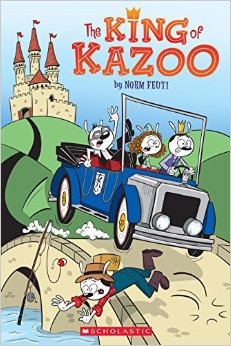
I was talking this book up to a group of women the other day and found that for all its simplicity, it’s surprisingly difficult to encapsulate why exactly I love this book as much as I do. Obviously there’s the Carl Barks influence (right down to the Gyro Gearloose-esque inventor), so that’s a plus. But I really latched onto the sense of humor, which is not easy to pull off. Of all the books on this list I think I might deem it the funniest. Let’s hope there are more in the pipeline.
Lowriders to the Center of the Earth by Cathy Camper, ill. Raul the Third
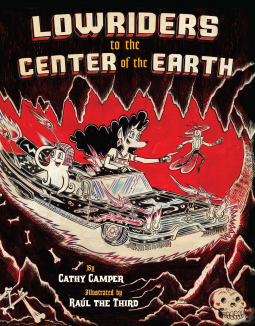
Here’s a trend I noticed in 2016: I kept encountering sequels or companion books where I liked the newer creations much more than their predecessors. Case in point, the latest Lowriders title. I was sadly lukewarm when Lowriders in Space came out. I wanted to adore it (I mean, Raul the Third illustrates his books with Bic pens, people!) but the storyline didn’t cut it for it. Fast forward to 2016 and Lowriders to the Center of the Earth. Now THAT is more like it! Integrating ancient Aztec gods alongside legends of the chupacabra and La Llorona (amongst others), with a little Mexican wrestling thrown in for spice, this book is delicious. Loved the plot, the adventure, the characters, and the fact that I never saw where it was going. Camper and Raul are clearly hitting their stride.
The Nameless City by Faith Erin Hicks, color by Jordie Bellaire

I came very close to not reading this book this year. I mean, I absolutely adore Faith Erin Hicks (Friends With Boys is a particular favorite and close to my heart) but it was marketed as YA and I didn’t want to truck with books outside my age range. It was only when the book appeared on New York Public Library’s 100 Children’s Books list for 2016 that I came to understand that it’s not really YA but straight up middle grade. Once I got my hands on a copy I devoured it in one sitting. Wowza! If you’ve a kid that loves Avatar the Last Airbender, just tell them that the book is basically set in Ba Sing Se and they’ll know exactly what you mean. This is Character Development: The Book, in a good way. Haven’t read it yet? You lucky duck. You’re in for a treat.
Pinocchio: The Origin Story by Alessandro Sanna

Again with the pretty pretty. Again with the imported book that has already appeared on two other lists. I care not. If I could make Sanna a household name, you know that I’d do so.
Snow White: A Graphic Novel by Matt Phelan

The most cinematic of the books on this list this year. It’s also, quite possibly, Matt Phelan’s best to date. And if you haven’t seen it, check out the holiday image he created for the Seven Impossible Things Before Breakfast blog. Apropos since this is such a Christmasy book.
Varmints by Andy Hirsch
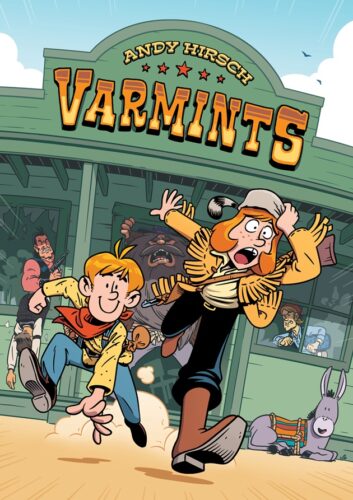
Anyone else notice that three of today’s comics’ covers feature a boy and a girl running hell-for-leather together (it’s harder to notice on Compass South, but it’s there)? Just something I noticed.
Now you might think that after reading Candy Fleming’s remarkable bio of Buffalo Bill Cody I’d be ruined for the Old West forever. Not so! Andy Hirsch takes us back to a time of shysters, mules, and villains with two siblings you just gotta root for. I did admittedly have a hard time finishing the book, if only because my darn kids kept trying to take it off me. Sorry, kiddos. This is mommy’s comic book. Mommy’s!
Interested in the other lists of the month? Here’s the schedule so that you can keep checking back:
December 1 – Board Books
December 2 – Board Book Adaptations
December 3 – Nursery Rhymes
December 4 – Picture Book Readalouds
December 5 – Rhyming Picture Books
December 6 – Alphabet Books
December 7 – Funny Picture Books
December 8 – Calde-Nots
December 9 – Picture Book Reprints
December 10 – Math Picture Books
December 11 – Bilingual Books
December 12 – International Imports
December 13 – Books with a Message
December 14 – Fabulous Photography
December 15 – Fairy Tales / Folktales
December 16 – Oddest Books of the Year
December 17 – Older Picture Books
December 18 – Easy Books
December 19 – Early Chapter Books
December 20 – Graphic Novels
December 21 – Poetry
December 22 – Fictionalized Nonfiction
December 23 – American History
December 24 – Science & Nature Books
December 25 – Transcendent Holiday Titles
December 26 – Unique Biographies
December 27 – Nonfiction Picture Books
December 28 – Nonfiction Chapter Books
December 29 – Novel Reprints
December 30 – Novels
December 31 – Picture Books


By:
Betsy Bird,
on 11/17/2016
Blog:
A Fuse #8 Production
(
Login to Add to MyJacketFlap)
JacketFlap tags:
middle grade graphic novels,
Best Books of 2016,
2016 reviews,
Reviews 2016,
2017 Caldecott contenders,
2016 graphic novels,
2016 middle grade graphic novels,
Reviews,
graphic novels,
Matt Phelan,
Best Books,
Candlewick,
Add a tag
 Snow White: A Graphic Novel
Snow White: A Graphic Novel
By Matt Phelan
Candlewick Press
$19.99
ISBN: 978-0-7636-7233-1
Ages 9-12
On shelves now
I’d have said it couldn’t be done. The Snow White fairytale has been told and retold and overdone to death until there’s not much left to do but forget about it entirely. Not that every graphic novel out there has to be based on an original idea. And not that the world is fed up with fairytales now (it isn’t). But when I heard about Matt Phelan’s Snow White: A Graphic Novel I was willing to give it a chance simply because I trusted its creator and not its material. The crazy thing is that even before I picked it up, it threw me for a loop. I heard that the story was recast in 1920s/ early-1930s Depression-era New York City. For longer than I’d care to admit I just sort of sat there, wracking my brain and trying desperately to remember anything I’d ever seen that was similar. I’ve seen fairytales set during the Depression before, but never Snow White. Then I picked the book up and was struck immediately by how beautiful it was. Finally I read through it and almost every element clicked into place like the gears of a clock. I know Matt Phelan has won a Scott O’Dell Award for The Storm in the Barn and I know his books get far and wide acclaim. Forget all that. This book is his piece de resistance. A bit of fairytale telling, to lure in the kids, and a whole whopping dollop of cinematic noir, deft storytelling, and clever creation, all set against a white, wintery backdrop.
The hardened detective thinks he’s seen it all, but that was before he encountered the corpse in the window of a department store, laid out like she was sleeping. No one could account for her. No one except maybe the boy keeping watch from across the street. When the detective asks for the story he doesn’t get what he wants, but we, the readers, do. Back in time we zip to when a little girl lost her mother to illness and later her father fell desperately in love with a dancer widely proclaimed to be the “Queen of the Follies.” Sent away to a boarding school, the girl returns years later when her father has died and his will leaves all his money in a trust to Snow. Blinded by rage, the stepmother (who is not innocent in her husband’s death) calls in a favor with a former stagehand to do away with her pretty impediment, but he can’t do the deed. What follows is a gripping tale of the seven street kids that take Snow under their wing (or is it the other way around?), some stage make-up, a syringe, an apple, and an ending so sweet you could have gotten it out of a fairytale.
 Let’s get back to this notion I have that the idea of setting Snow White during the Depression in New York is original. It honestly goes above and beyond the era. I could swear I’d never read or seen a version where the seven dwarfs were seven street kids. Or where the evil stepmother was a star of the Ziegfeld Follies. Snow’s run from Mr. Hunt is through Central Park through various shantytowns and he presents the stepmother with a pig’s heart procured at a butcher. Even making her glass coffin a window at Macy’s, or the magic mirror an insidious ticker tape, feels original and perfectly in keeping with the setting. You begin to wonder how no one else has ever thought to do this before.
Let’s get back to this notion I have that the idea of setting Snow White during the Depression in New York is original. It honestly goes above and beyond the era. I could swear I’d never read or seen a version where the seven dwarfs were seven street kids. Or where the evil stepmother was a star of the Ziegfeld Follies. Snow’s run from Mr. Hunt is through Central Park through various shantytowns and he presents the stepmother with a pig’s heart procured at a butcher. Even making her glass coffin a window at Macy’s, or the magic mirror an insidious ticker tape, feels original and perfectly in keeping with the setting. You begin to wonder how no one else has ever thought to do this before.
You’d also be forgiven for reading the book, walking away, giving it a year, and then remembering it as wordless. It isn’t, but Phelan’s choosy with his wordplay this time. Always a fan of silent sequences, I was struck by the times we do see words. Whether it’s the instructions on the ticker tape (a case could easily be made that these instructions are entirely in the increasingly deranged step-mother’s mind), Snow’s speech about how snow beautifies everything, or the moment when each one of the boys tells her his name, Phelan’s judiciousness makes the book powerful time and time again. Can you imagine what it would have felt like if there had been an omniscient narrator? The skin on the back of my neck shudders at the thought.
For all that the words are few and far between, you often get a very good sense of the characters anyway. Snow’s a little bit Maria Von Trapp and a little bit Mary Poppins to the boys. I would have liked Phelan to give her a bit more agency than, say, Disney did. For example, when her step-mother informs her, after the reading of her father’s will, that her old room is no longer her own, I initially misread Snow’s response to be that she was going out to find a new home on her own. Instead, she’s just going for a walk and gets tracked down by Mr. Hunt in the process. It felt like a missed beat, but not something that sinks the ship. Contrast that with the evil stepmother. Without ever being graphic about it, not even once, this lady just exudes sex. It’s kind of hard to explain. There’s that moment when the old stagehand remembers when he once turned his own body into a step stool so that she could make her grand entrance during a show. There’s also her first entrance in the Follies, fully clothed but so luscious you can understand why Snow’s father would fall for her. The book toys with the notion that the man is bewitched rather than acting of his own accord, but it never gives you an answer to that question one way or another.
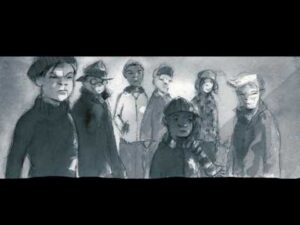 Lest we forget, the city itself is also a character. Having lived in NYC for eleven years, I’ve always been very touchy about how it’s portrayed in books for kids. When contemporary books are filled with alleyways it makes me mighty suspicious. Old timey fare gets a pass, though. Clever too of Phelan to set the book during the winter months. As Snow says at one point, “snow covers everything and makes the entire world beautiful . . . This city is beautiful, too. It has its own magic.” So we get Art Deco interiors, and snow covered city tops seen out of huge plate glass windows. We get theaters full of gilt and splendor and the poverty of Hoovervilles in the park, burning trashcans and all. It felt good. It felt right. It felt authentic. I could live there again.
Lest we forget, the city itself is also a character. Having lived in NYC for eleven years, I’ve always been very touchy about how it’s portrayed in books for kids. When contemporary books are filled with alleyways it makes me mighty suspicious. Old timey fare gets a pass, though. Clever too of Phelan to set the book during the winter months. As Snow says at one point, “snow covers everything and makes the entire world beautiful . . . This city is beautiful, too. It has its own magic.” So we get Art Deco interiors, and snow covered city tops seen out of huge plate glass windows. We get theaters full of gilt and splendor and the poverty of Hoovervilles in the park, burning trashcans and all. It felt good. It felt right. It felt authentic. I could live there again.
We live in a blessed time for graphic novels. With the recent win of what may well be the first graphic novel to win a National Book Award, they are respected, flourishing, and widely read. Yet for all that, the graphic novels written for children are not always particularly beautiful to the eye. Aesthetics take time. A beautiful comic is also a lot more time consuming than one done freehand in Photoshop. All the more true if that comic has been done almost entirely in watercolors as Phelan has here. I don’t think that there’s a soul alive who could pick up this book and not find it beautiful. What’s interesting is how Phelan balances the Art Deco motifs with the noir-ish scenes and shots. When we think of noir graphic novels we tend to think of those intensely violent and very adult classics like Sin City. Middle grade noir is almost unheard of at this point. Here, the noir is in the tone and feel of the story. It’s far more than just the black and white images, though those help too in their way.
 The limited color palette, similar in many ways to The Storm in the Barn with how it uses color, here invokes the movies of the past. He always has a reason, that Matt Phelan. His judicious use of color is sparing and soaked with meaning. The drops of blood, often referred to in the original fairytale as having sprung from the queen’s finger when she pricked herself while sewing, is re-imagined as drops of bright red blood on a handkerchief and the pure white snow, a sure sign of influenza. Red can be lips or an apple or cheeks in the cold. Phelan draws scenes in blue or brown or black and white to indicate when you’re watching a memory or a different moment in time, and it’s very effective and easy to follow. And then there’s the last scene, done entirely in warm, gentle, full-color watercolors. It does the heart good to see.
The limited color palette, similar in many ways to The Storm in the Barn with how it uses color, here invokes the movies of the past. He always has a reason, that Matt Phelan. His judicious use of color is sparing and soaked with meaning. The drops of blood, often referred to in the original fairytale as having sprung from the queen’s finger when she pricked herself while sewing, is re-imagined as drops of bright red blood on a handkerchief and the pure white snow, a sure sign of influenza. Red can be lips or an apple or cheeks in the cold. Phelan draws scenes in blue or brown or black and white to indicate when you’re watching a memory or a different moment in time, and it’s very effective and easy to follow. And then there’s the last scene, done entirely in warm, gentle, full-color watercolors. It does the heart good to see.
The thing about Matt Phelan is that he rarely does the same story twice. About the only thing you can count on with him is that he loves history and the past. Indeed, between showing off a young Buster Keaton ( Bluffton) and a ravaged Dust Bowl setting (The Storm in the Barn) it’s possible “Snow White” is just an extension of his favorite era. As much a paean to movies as it is fairytales and graphic novels, Phelan limits his word count and pulls off a tale with truly striking visuals and killer emotional resonance. I don’t think I’ve ever actually enjoyed the story of Snow White until now. Hand this book to graphic novel fans, fairytale fans, and any kid who’s keen on good triumphing over evil. There might be one or two such children out there. This book is for them.
On shelves now.

March Book Three. John Lewis and Andrew Aydin. Illustrated by Nate Powell. 2016. 246 pages. [Source: Library] First sentence: Y'all better hurry along, now. Sunday School's nearly over, and the main service'll be startin' soon.
Premise/plot: March is the graphic novel autobiography of John Lewis. So far, there are three volumes in this autobiography. Today, I am reviewing book three. It opens in Birminham, Alabama, September 15, 1963, the bombing of a church. This one covers the rest of 1963, 1964, and 1965. The 'past' story line concludes with the 1965 Voting Rights Act becoming a law. The 'current' story line concludes with him deciding to do a graphic novel autobiography.
My thoughts: From start to finish, I personally found this compelling. Not just start to finish book three. Though that is certainly true enough. But start to finish all three books in this autobiography. Even though this third book was longer than the previous two, it didn't feel weighed down by unnecessary elements. If it was weightier in substance--darker, more depressing perhaps--that is for one good reason: it reflects what was happening. The book definitely captures the ongoing struggle of the non-violent fight for freedom: the spirit of determination, the bravery and courage, the stubbornness of men and women and even children taking a stand for something they believed in heart and soul and mind. Yes, this book is violent and bloody, perhaps much more so than the first two volumes even. But it shows readers--of all ages--that this "civil rights movement" was not quick and easy. That it was something that took years--decades even. That it was exhausting. That it took not just a few dozen big names, but hundreds, thousands of people. One can't learn "everything" there is to know about the "civil rights movement" by reading one or two books. This book series showed you how BIG everything was. © 2016 Becky Laney of
Becky's Book Reviews
March Book Two. John Lewis. Andrew Aydin. Illustrated by Nate Powell. 2015. 189 pages. [Source: Library]
First sentence: January 20, 2009. Brother John--Good to see you. You ready?
Premise/plot: March is the graphic novel autobiography of John Lewis. So far, there are three volumes in this autobiography. Today, I am reviewing book two. Lewis gives us an incredible behind-the-scenes glimpse of the civil rights movement. This one also has a built-in framework: it is set in 2009, and he's reflecting on his life before attending the Inauguration.
My thoughts: I can't imagine anyone reading the first book and not wanting to continue on with book two. My guess? They'd want it IMMEDIATELY. This second book picks up the story of the civil rights movement in November 1960. (The 'present' day story is still January 2009). This second volume is even better, in my opinion. It covers almost four years: the rest of 1960, 1961, 1962, and 1963. OH THE INTENSITY. I don't know how it is both possible to stay big-picture and yet include so many details, but, the writing is so wonderful, the art is so wonderful, that it just really puts you right there and keeps you engaged.
Definitely would recommend book one and two. I'm excited to start book three soon!
© 2016 Becky Laney of
Becky's Book Reviews
March: Book One. John Lewis, Andrew Aydin. Illustrated by Nate Powell. 2013. 128 pages. [Source: Library]
First sentence: Can you swim? No. Well, neither can I--but we might have to.
Premise/plot: March is the graphic novel autobiography of John Lewis. So far, there are three volumes in this autobiography. Today, I am reviewing book one. Lewis gives us an incredible behind-the-scenes glimpse of the civil rights movement. This one also has a built-in framework: it is set in 2009, and he's reflecting on his life before attending the Inauguration.
My thoughts: Dare I say this one is a must read? I'm tempted, really tempted. (And if you follow me on the blog and know my tastes inside and out, then you know that I don't usually read graphic novels.)
What I like best about this one is that it is engaging, compelling, emotional, personal, and above all else cohesive. It gives you a truer sense of the 'big picture' of the civil rights movement than any other book I've read--that I can remember at least. (When you read 400+ books a year, I'll be the first to admit that you don't necessarily recall most of them with much detail.)
I also love the amount of detail. (For example, that he used to preach to his chickens!)
I've read the first two books now and I'm excited to begin the third.
© 2016 Becky Laney of
Becky's Book Reviews
 Yeah, so the irony about me doing a post about scary books for Halloween is that I am a wimp who tends to avoid anything scary. But I do like suspense, and sometimes I can handle a good dark fantasy. And, of course, I've had to read more than a few... Read the rest of this post
Yeah, so the irony about me doing a post about scary books for Halloween is that I am a wimp who tends to avoid anything scary. But I do like suspense, and sometimes I can handle a good dark fantasy. And, of course, I've had to read more than a few... Read the rest of this post
Hansel and Gretel. Neil Gaiman. Illustrated by Lorenzo Mattotti. 2014. Toon. 54 pages. [Source: Review copy]
First sentence: This all happened a long time ago, in your grandmother's time, or in her grandfather's. A long time ago. Back then, we all lived on the edge of the great forest.
Premise/plot: The book is an illustrated retelling of the fairy tale Hansel and Gretel. It isn't a picture book necessarily. Nor is it a graphic novel. Every two pages of text is followed by two pages of illustration. The illustrations are black and white and are by Lorenzo Mattotti.
My thoughts: Hansel and Gretel isn't one of my favorite fairy tales to begin with, so my expectations were not very high. I wasn't disappointed perhaps because my expectations were realistic. I was surprised by how much I liked the illustrations. They are dark but expressive. This retelling by Gaiman isn't new and unique and full of extra-special clever twists and turns. It is traditional for the most part.
© 2016 Becky Laney of
Becky's Book Reviews
Agatha: The Real Life of Agatha Christie. 2016. 130 pages. [Source: Library]
First sentence: These novelists will stoop to anything for some attention!
Premise/plot: Agatha: The Real Life of Agatha Christie is a graphic novel for adults and perhaps even young adults, if they have read Christie's mysteries and can't get enough! I would say this one is primarily for fans of Agatha Christie. If you've never read Christie, if you've never met Hercule Poirot and Miss Marple, then this isn't the way to be introduced to them. Trust me. What readers get are snippets of Christie's life.
The graphic novel opens in 1926 with the mysterious disappearance of Agatha Christie. It then flashes back to the beginning, to tell a more traditional life story. The flow of this one is start-and-stop. More like you're flipping through a stack of photographs of a person's life than actually taking the time to read a narrative biography.
One sees Agatha Christie as a writer--haunted in a way by her creations. Hercule Poirot and Miss Marple especially have a way of popping up and interacting with Christie. One also sees her as a world-traveler, a wife, and a mother. One catches the barest of glimpses of Christie during World War I and World War II.
My thoughts: I read the HUGE autobiography of Agatha Christie a year or two ago. I LOVED, LOVED, LOVED, LOVED it. Found it absolutely fascinating. Perhaps a little rambling for those who aren't big readers, but, just about perfect for me. This is very condensed and abbreviated.
That being said, I am glad I read this one. I liked it. I may not have loved, loved, loved it. But it is an entertaining read.
© 2016 Becky Laney of
Becky's Book Reviews
Snow White. Matt Phelan. 2016. Candlewick. 216 pages. [Source: Review copy]
First sentence: What's the story here? Who is she?
Premise/plot: Those questions are asked by a New York City detective as he examines a crime scene--or potential crime scene at a department store. They provide the framework for Matt Phelan's newest graphic novel, Snow White. The book is a retelling of the traditional tale set in America, in New York City, for the most part, during the Depression.
Instead of an evil Queen of a stepmother, Samantha White (aka Snow) has dealings with the Queen of the Follies. Her stepmother being a Broadway star, a Ziegfeld girl. Instead of seven dwarfs, Snow is saved by THE SEVEN, a gang of street children.
My thoughts: I like this one a lot. I really enjoyed his artwork. I thought while both story and illustration were on the simple, understated side, it worked well for me. While the setting makes this one unique, the story is traditional. No further characterization has been done--for better or worse. I didn't mind this. As I said, it worked for me. I don't have to have "new" and "modern" twists and turns and complications for me to like a fairy tale retelling.
© 2016 Becky Laney of
Becky's Book Reviews

By:
Becky Laney,
on 8/24/2016
Blog:
Becky's Book Reviews
(
Login to Add to MyJacketFlap)
JacketFlap tags:
library book,
Harry N. Abrams,
mg historical,
j historical,
2016,
graphic novels,
Texas,
J Fiction,
MG Fiction,
Add a tag
Alamo All-Stars (Nathan Hale's Hazardous Tales #6) 2016. Abrams. 128 pages. [Source: Library]
First sentence: Three hundred families...land grand....Texas...almost home.
Premise/plot: Nathan Hale and his two pals (the hangman and the British Officer) are joined by Juan Seguin and his three executioners (firing squad, I believe?) to tell the story of the Alamo. It doesn't rush into the story of the Alamo though. Readers learn about Mexico declaring its independence from Spain, the setting up and deposing of several Mexican governments, the arrival, with permission, of American settlers (families) into Texas, the clashes and near-clashes of those settlers with the native tribes in Texas (all given names, I won't mention them all here) and with the Mexican government. Not all Mexican leaders welcomed the idea of settlers, some feared that the more settlers there were, the more likely they would rebel and claim Texas for their very own. Readers learn about Stephen F. Austin, Jim Bowie, Sam Houston, Davy Crockett, William Travis, etc. Some of the people we learn about center around the Alamo--lived, fought, and died at the Alamo--some not. The book explores why they were fighting, what they thought they were fighting for, and their strong personalities that certainly didn't always help in their decision making.
My thoughts: Though a Texan, Texas history has not been my strongest subject especially when I was in school! I found this book a lot more interesting than a textbook. It also helps knowing that I'll never be quizzed on the subject again. Quite the difference between reading for the story and reading to remember names, dates, and places.
There were a LOT of characters in this one. It was fun that our familiar gang was joined by four more. Juan Seguin and his executioners added something to the story. I liked how the hangman came to get along with them and wanted to have a sleepover.
© 2016 Becky Laney of
Becky's Book Reviews

By:
Becky Laney,
on 8/23/2016
Blog:
Becky's Book Reviews
(
Login to Add to MyJacketFlap)
JacketFlap tags:
graphic novels,
slavery,
J Fiction,
MG Fiction,
library book,
Harry N. Abrams,
mg historical,
j historical,
2015,
books reviewed in 2016,
Add a tag
The Underground Abductor. (Nathan Hale's Hazardous Tales #5) Nathan Hale. 2015. Abrams. 128 pages. [Source: Library]
First sentence: It is time to hang this spy! Are you sure? Can't we get one more story out of him first?
Premise/plot: Nathan Hale sets out to prove that America isn't perfectly perfect, and, that America has in fact "taken part in some truly horrible, despicable, abominable, atrocious, downright evil acts." He speaks, of course, of slavery. And in this graphic novel, he tells the story of Harriet Tubman (aka Araminta Ross). It's an intense story without a doubt. He speaks of her growing up in slavery, the abuses she faced, the challenges she overcame, her marrying a free man, her decision to run away, her decision to run back into slavery. For it became her mission to travel back and forth between North and South saving slaves--escorting slaves to safety, to Canada, in fact. All via the "underground railroad" of abolitionists. Some of this information I was familiar with, but, some was new to me. For example, I was not aware of her head injury perhaps leading to her narcolepsy. I had no idea of her visions either!
My thoughts: I am so glad I discovered this series. I really have enjoyed reading these books practically back to back. I would definitely recommend all of the books in the series. I hope it is a very LONG series.
© 2016 Becky Laney of
Becky's Book Reviews

By:
Becky Laney,
on 8/22/2016
Blog:
Becky's Book Reviews
(
Login to Add to MyJacketFlap)
JacketFlap tags:
books reviewed in 2016,
graphic novels,
J Fiction,
World War I,
2014,
MG Fiction,
library book,
Harry N. Abrams,
mg historical,
j historical,
Add a tag
Treaties, Trenches, Mud, and Blood. (Nathan Hale's Hazardous Tales #4) Nathan Hale. 2014. Abrams. 128 pages. [Source: Library]
First sentence: This prologue is brought to you by E Pluribus Hangman.
Premise/plot: Nathan Hale shares with the British soldier (Provost) and hangman a story of when England and America will no longer be fighting each other but best friends and allies. This graphic novel is about World War I. It selectively, yet descriptively, tells of the war, year by year. It is action-packed, and yet one knows it's not exhaustive in its coverage.
Each country mentioned (both those fighting and those holding onto their neutral status) gets an animal assigned to it. So most of the illustrations are of animals at war with one another. Serbia is a Wolf. The Austro-Hungarian Empire is a Griffin. Russia is a Bear. Germany is an Eagle. France is a Gallic Rooster. Belgium is a Lion. England is a Bulldog (since Lion was already taken). America is a Bunny (since Eagle is already taken). Australia is a Kangaroo. Canada is a Beaver. New Zealand is a Kiwi. India is a Tiger. Ottoman Empire is an Otter. Japan is a Raccoon Dog. Those are the countries I can remember.
World War I is a complex subject, there is a lot to digest. There are hundreds--if not thousands--of books written by adults for adults seeking to explain the war and exhaustively cover every battle, every victory, every loss. So it is an ambitious project to condense the war into a middle grade graphic novel.
Nathan Hale: War is built and controlled by human hands--humans start it, humans stop it.
Hangman: Then WHY DIDN'T THEY STOP IT EARLIER--BEFORE IT KILLED EVERYBODY?! WHY DID THEY LET IT OUT IN THE FIRST PLACE!? THEY SHOULD LOCK IT UP AND NEVER EVER LET IT OUT!!!
Provost: Calm down, Hangman! There are times when war is a necessity. Tell him it is so, Captain Hale.
Nathan Hale: I'm not here to judge which wars were necessary and which wars weren't. I just tell the story. World War I is best summed up by those who experienced it.
All war is a symptom of man's failure as a thinking animal. ~ John Steinbeck
My thoughts: I really thought this book was well done. Yes, it's a bit text heavy. Yes, there is a LOT of information packed into it, perhaps too much information to actually absorb and digest. But it's well-crafted and well-organized. I'm impressed by how Nathan Hale (the author) was able to break down all the information and present it in such a concise way. War is never glorified, yes, the Provost and Hangman sometimes get carried away with BATTLES, but, by the end, Nathan Hale (the spy) has moved them both with his story.
© 2016 Becky Laney of
Becky's Book Reviews

By:
Betsy Bird,
on 8/18/2016
Blog:
A Fuse #8 Production
(
Login to Add to MyJacketFlap)
JacketFlap tags:
Reviews,
graphic novels,
Andrews McMeel Publishing,
middle grade graphic novels,
Alexis Fajardo,
2016 reviews,
Reviews 2016,
2016 graphic novels,
2016 middle grade graphic novels,
Amp Comics,
Add a tag
 Kid Beowulf: The Blood-Bound Oath
Kid Beowulf: The Blood-Bound Oath
By Alexis E. Fajardo
Color by Jose Mari Flores
Prologue Color by Brian Kolm
Amp Comics for Kids (an imprint of Andrews McMeel Publishing)
$10.99
ISBN: 978-1-4494-7589-5
Ages 9-12
On shelves now.
This is a true story. I started college in 1996. Earlham College. Richmond, Indiana. Nice place. Little Quaker school (“Fight! Fight! Inner light! Kill, Quakers, Kill,” ← our sports chant). Little colleges have little cute traditions. Mine was keen on complicated pranks. One day I go down to the cafeteria for a bowl of Cheerios and lo and behold there, on the ceiling, is this epic mural of two cartoon characters touching fingers ala Michelangelo’s Adam and God in The Sistine Chapel. The characters in question were from a weekly comic in the school newspaper penned by one Alexis Fajardo. From that time onward I would Alexis Fajardo. And I followed his career. He kept up the comic strip (called “Plato’s Republic”) for a while and then started in on this Kid Beowulf graphic novel series. I didn’t get any chance to read them but they had a fun premise and the art really popped. Now, after all these many years, Amp Comics has picked up the series and given it a proper running start. In the grand tradition of Bone, Amulet, and countless other epic quest graphic novels, Fajardo gives us heroes to root for, villains to loathe, and complex characterizations around every turn. He’s come a long way from painting ceilings.
We start with the original epic poem of Beowulf. The original tale of man vs. monster is recounted but, the book assures us, “as men have told it – as I said, they twist the truth. Too blind to know the proper tale of a king’s run-rampant youth . . .” Now we are in the land of the Danes where a headstrong prince threatens a tenuous peace. Hrothgar cannot stand those Heathobards that he feels infringe on his homelands. When he encounters a dragon of great power he makes a deadly pact. Upon his return he begins a reign of destruction and ignorance, eventually fathering his own monstrous daughter. Named Gertrude, she is raised by the same dragon with whom Hrothgar made a pact. All this so that, in time, she will give birth to her own twins. One looks like her and is named Grendel. The other, a fully human boy, named Beowulf. And when they lose and find one another again, that’s when the story truly begins.
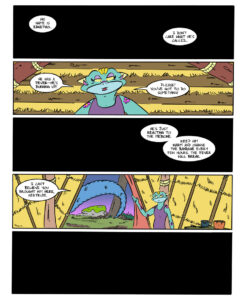 One thing I didn’t really expect when I picked the book up was to encounter Fajardo’s inclination to tell his tale in his own time. By all rights, all this book is really doing from the start is setting the stage for future tales to come. Yet though it’s named “Kid Beowulf”, the titular hero and his twin brother don’t even make an appearance until page 120, and even then they’re just babies. The reader’s patience is rewarded if that reader chooses to stick with the storyline, but it means that the best kids for this book won’t be the ones who like simplified narratives of action and adventure on every other panel. No, these books are going to be for those kids who like to sink deep into a world, dwell there for a time, scope out the situations, and understand the motivations. If you’ve a new graphic novel reader on your hands, I wouldn’t start them off with Kid Beowulf. This book is better suited for those kids out there with a little comic-reading experience under their belts.
One thing I didn’t really expect when I picked the book up was to encounter Fajardo’s inclination to tell his tale in his own time. By all rights, all this book is really doing from the start is setting the stage for future tales to come. Yet though it’s named “Kid Beowulf”, the titular hero and his twin brother don’t even make an appearance until page 120, and even then they’re just babies. The reader’s patience is rewarded if that reader chooses to stick with the storyline, but it means that the best kids for this book won’t be the ones who like simplified narratives of action and adventure on every other panel. No, these books are going to be for those kids who like to sink deep into a world, dwell there for a time, scope out the situations, and understand the motivations. If you’ve a new graphic novel reader on your hands, I wouldn’t start them off with Kid Beowulf. This book is better suited for those kids out there with a little comic-reading experience under their belts.
In a lot of ways, the book series reminds me of the old Asterix and Obelix comics. It’s not an entirely fair comparison since the tone of the two comics is completely different. Yet both spend an inordinate amount of time in an ancient world. Fajardo himself acknowledges this with the creation of two characters that intentionally have many of Asterix & Obelix’s personality quirks. Still and all, the book was far more complicated than I expected. Kids love that stuff, by the way. They love it when an author has the guts to tell a story without feeling obligated to explain everything constantly. And Fajardo doesn’t water down the complexity. You’re either on board with the storytelling from the start or you’re not. The politics of the region is what the plot hinges on continually, so you need to read this with an open mind towards the Geats, Danes, Heathobards, and others. People also come and go, betray one another, and reappear after years and years. To keep track of it all there is a Character Glossary but unfortunately it’s located in the back of the book where it might easily go missed for some time. If you’re handing this book to a kid, I recommend that you point that little element out to them first thing. They’ll thank you for it later.
After sitting down and thinking long and hard about it, I came to the shocking realization that Fajardo likes three-dimensional characters. That shouldn’t be all that shocking, actually. Lots of authors do. But consider the format here. We’re dealing with an epic quest graphic novel series. I mentioned Bone and Amulet earlier and if there’s one thing those stories have in common it’s bad guys that sulk about without so much as a sympathetic hair on their heads. Kid Beowulf is different. There are plenty of guys (and gals, sorta) working for their own selfish interests, but that also are capable of learning and growing. Hrothgar is probably the most flawed fella in the book, but even he does a slow 180-degree turnaround over the decades. And sympathetic characters like Gertrude also have their greedy moments for which they’ll have to pay the price later. It’s so interesting that you could even get this kind of shading in a book based, as it is, on a good vs. bad epic poem like Beowulf. That’s the irony at work.
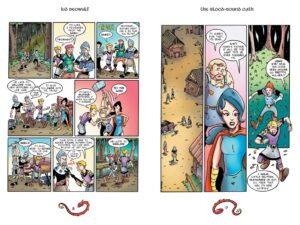 Considering the time period, the role of women in this book is worthy of examination. Fajardo has sort of a single style when it comes to human women (human girls don’t seem to exist) which is a heavy-lidded femme fatale look, regardless of their positions or names. The one exception to this rule is, of course, Gertrude, and in her monster form she gets to have all the freedom of any of the boys around her. She fights. She gets more than just a couple pages here and there. The book doesn’t even come close to passing the Bechdel Test, and Gertrude’s methods of finding a mate are disappointingly stereotypical, but for the most part she’s a strong female character worthy of examination. There is, however, room for improvement and I sincerely hope future installments will contain at least one other woman who does more than think only of the men in her life.
Considering the time period, the role of women in this book is worthy of examination. Fajardo has sort of a single style when it comes to human women (human girls don’t seem to exist) which is a heavy-lidded femme fatale look, regardless of their positions or names. The one exception to this rule is, of course, Gertrude, and in her monster form she gets to have all the freedom of any of the boys around her. She fights. She gets more than just a couple pages here and there. The book doesn’t even come close to passing the Bechdel Test, and Gertrude’s methods of finding a mate are disappointingly stereotypical, but for the most part she’s a strong female character worthy of examination. There is, however, room for improvement and I sincerely hope future installments will contain at least one other woman who does more than think only of the men in her life.
Sit down for five minutes in any public school in America today and don’t be surprised if you hear the words “Common Core State Standards” waft by at some point. These standards aren’t going anywhere anytime soon, and with their focus on nonfiction and folktales, it just makes good clean sense for any author of a fictional work to find some kind of curricular tie-in. Fajardo does just that. In fact, he goes a little bit crazy with it. I could understand the World Map at the start and the finish as well as in color in the backmatter. And the second map, the one of Daneland circa 450 A.D., that was a nice touch. But about the time I noticed the glossary of terms, character glossary, and family tree, to say nothing of the section about the original epic poem itself, Fun Fact section, and Bibliography of recommended sources (which, for the record, is a beautiful collection) I was floored. Add in a large section on how Fajardo draws his characters, inks and colors them, and more and . . . well, you’d be forgiven for feeling that this more akin to a full college course on Beowulf and graphic novels than a single collected comic.
 I haven’t mentioned the art itself, of course, which is poor form when reviewing a graphic novel. Fajardo employs two different styles in this book. The first part, during the retelling of the original Beowulf epic poem, is done in a more realistic, cinematic style. Even the colorist is different from the colorist in the rest of the book. Then the book becomes far cartoonier. Tiny too, considering how many panels Fajardo is able to pack into a single page. For some, the seriousness of the content (the fate of Yrs, for example) doesn’t match the style. For others, it will seem a natural complement. For my part I did find the cartoonishness a surprise, considering the actions of the characters, but as the story continued I got used to it. Kids, I suspect, will feel the same way.
I haven’t mentioned the art itself, of course, which is poor form when reviewing a graphic novel. Fajardo employs two different styles in this book. The first part, during the retelling of the original Beowulf epic poem, is done in a more realistic, cinematic style. Even the colorist is different from the colorist in the rest of the book. Then the book becomes far cartoonier. Tiny too, considering how many panels Fajardo is able to pack into a single page. For some, the seriousness of the content (the fate of Yrs, for example) doesn’t match the style. For others, it will seem a natural complement. For my part I did find the cartoonishness a surprise, considering the actions of the characters, but as the story continued I got used to it. Kids, I suspect, will feel the same way.
There is a school of thought that says that if you let a kid read whatever they want, they’ll work their way around to the classics in time. I read a ton of really truly terrible Harvey comics as a kid. Later I would delve into works like Les Miserables and Middlemarch for fun. Is there a connection? Nobody knows! A lot of parents fear that their kids will gorge themselves on comics, making them wholly and entirely unable to digest literature without pictures. To them, I hand Kid Beowulf. I truly do believe that a comic done correctly, done with panache and interest and a unique style of its own, will garner fans that will seek out other material on the same topic. Not every kid who reads Fajardo’s book is going to take a crack at a little Old English on their own. They may, however, dive into some of those books Mr. Fajardo so helpfully included in his Bibliography. Or they might learn a bit about the poem’s origins. Or they might want to make their own comics about ancient texts. Whatever the case, you can look at this book either as a springboard for bigger better things, or just a good rip-roaring tale that can stand on its own two feet. Whatever your justification, Fajardo has the goods. That painting he made on the ceiling years ago seemed impossible. This series? Attainable. Now go attain it.
On shelves now.
Source: Final copy sent from publisher for review.
Like This? Then Try:
Professional Reviews: A star from Kirkus

Jenni Holm is here today to tell us that currently, children's graphic novel/comics publishing is a veritable Wild Wild West, the processes of acquisition and production are different for all publishing houses, but the ones that ARE making kids comics are behind them whole hog, which is great to hear!
She recommends you read the Comics Making Bible, aka
Understanding Comics by Scott McCloud. (I'd add the New Testaments of Comics Making are Jessica Abel and Matt Madden's
Drawing Words & Writing Pictures plus the follow up,
Mastering Comics.)
She briefly tells us how comics
were written, and shows us how the actual script pages compare: the old standard Stan Lee Method, the exhaustive/OCD Alan Moore method, and the classic, screenwriting style of script like a Joss Whedon would use. Jenni recommends using a screenplay format or her storyboard format as mentioned below, but probably NOT the Marvel Comic or Alan Moore format, which most traditional children's book editors might not be familiar with.
All do in some way separate out visually in the script the dialogue vs. action vs. narration. How do you use each part in your graphic novel script?
Dialogue: Same as prose, only now in speech bubbles!
Narration: More complicated, primarily used for scene transitions, major backgroun set-up, or increasingly internal monologue, occasionally even as a character, like the snarky narrator in BABYMOUSE.
Action: Stage directions/everything else that happens.
Jenni shares with us the various ways you rough out a comic, different types of storyboards, some of which are artist driven (sketches are fairly fleshed out and laid out and basic composition is done), some that are author driven.
HOW A BABYMOUSE GETS MADE:Jenni and Matt's graphic novels always start with story first. Jenni and Matt come up with a log line, and then Jenni starts planning the story with this sort of storyboard:
Jenni already knows that the final published BABYMOUSE is going to be 96 pages, which equals about 56 pages of this storyboard.
After Jenni writes it all out, it goes to Matt, and then the editor, and when everybody loves it, it goes back to Matt for thumbnailing.
Those thumbnails get laid out page by page and are then sent to the art director who double checks it for clarity and printing guidelines.
After that it goes back to Matt to do the final art and color spotting!
TADA!Jenni lists the children's publishers doing kid's comics today:
GRAPHIX (probably biggest commercial titles publisher via Scholastic)
First Second (all ages/arty)
Random House (younger/elementary school)
ABRAMS (Nathan Hale and Cece Bell, Wimpy Kid)
TOON BOOKS (via Candlewick, super young end of spectrum)
DC and MARVEL (may want to start YA)
BOOM STUDIOS (Lumberjanes)

By:
Becky Laney,
on 7/30/2016
Blog:
Becky's Book Reviews
(
Login to Add to MyJacketFlap)
JacketFlap tags:
graphic novels,
series books,
J Fiction,
MG Fiction,
library book,
Harry N. Abrams,
2013,
mg historical,
j historical,
books reviewed in 2016,
Add a tag
Donner Dinner Party. (Nathan Hale's Hazardous Tales #3). Nathan Hale. 2013. Harry N. Abrams. 128 pages. [Source: Library]
First sentence: Hear ye! Hear ye! Hear ye!
Premise/plot: Nathan Hale returns for this third hazardous tale in this graphic novel. The story that will prolong his life and delay his hanging is the story of the DONNER PARTY. His immediate audience, of course, is the hangman and a British officer. It's very convenient that since being eaten by the large American History book he can see the future and use the future to tell super-entertaining stories. Readers first meet the Reed family led by James Reed. Other families will be introduced as they journey west and join (and quit) wagon trains. The dangers are MANY. Some dangers are unpredictable and almost unavoidable. Other dangers they walk straight into confidently, sweeping away warnings. Usually if not always, always, it's the MEN making the decisions and the women and children who can do nothing but except the judgement of husbands and fathers. The story is FASCINATING AND HORRIBLE at the same time.
My thoughts: I really enjoyed this one. It is quite a compelling, absorbing read. You wouldn't think there would be a lot of characterization in a graphic novel, but, surprisingly there is. I had read very little if anything about the Donner Party, and, so I found it really interesting. I knew it was a grim story, but, I had not realized there were survivors too. So it wasn't quite as depressing as I first imagined it to be.
I definitely recommend this series of graphic novels. Even if you don't necessarily love reading graphic novels. The focus on history has me hooked. And I've become quite fond of Nathan Hale and his two would-be executioners.
© 2016 Becky Laney of
Becky's Book Reviews
Big Bad Ironclad (Nathan Hale's Hazardous Tales #2) Nathan Hale. 2012. Harry N. Abrams. 128 pages. [Source: Library]
First sentence: If you've got a story, you'd better tell it, Nathan Hale. This is a hanging, not a children's story hour.
Premise/plot: Nathan Hale, the spy, continues to outwit the British in this second graphic novel. (The first book in the series is ONE DEAD SPY.) Though he's due to be hanged any minute, his tales from the future (all taken from American History) are so entertaining that the British officer and hangman are delaying a bit. In his conversational style, the focus shifts from the current war (Revolutionary) to the Civil War. These stories concern the NAVY and the Civil War sea battles. Specifically, the race to build the best ironclad ships and create an indestructible navy. The South had the U.S.S. Merrimack. The North had The MONITOR. Of course, it isn't just the two ships that are the subject of this one. So many people are introduced, some of them quite fascinating and 'new to me' at that.
My thoughts: I enjoyed this one even more than the first book in the series. I really found this to be a quick, absorbing read. I may have thought it pushed a little too far to the absurd side when Gustavus Fox was illustrated as a fox to satisfy the whim of the hangman, but, I overlooked that in the end!
Even if you don't "love" graphic novels, if you love history you should give one of the books in the series a try.
© 2016 Becky Laney of
Becky's Book Reviews
One Dead Spy (Nathan Hale's Hazardous Tales #1) Nathan Hale. 2012. Abrams. 128 pages. [Source: Library]
First sentence: Welcome, one and all! I am the hangman. I am here to hang the man!
Premise/plot: Nathan Hale, the spy, narrates this graphic novel, the first in a new series by Nathan Hale. Readers meet him on the day of his hanging. A slight delay in the process gives him just enough time to practice finding the right last words to say. What he comes up with as his 'last words' are so good, that a giant book--a HISTORY BOOK--comes and swallows him whole. When he 'returns' from the book to the present, he knows the future. He further delays his hanging by telling two people--the hangman and a British officer--entertaining stories. He gets them hooked on history, in a way. The stories in this first volume are of the REVOLUTIONARY WAR. (The second book in the series is focused on the CIVIL WAR.)
My thoughts: It's a graphic novel. I am not a big reader of graphic novels--usually. But I always seem to find a handful of exceptions to the rule to read throughout the year. I enjoyed this one so much, I think I'm going to continue on with the series. I believe there are six so far.
I like the fact that they are packed with history, and the focus is on the STORY of history. The characters--minus the narrator, hangman and British officer--seem to be taken from history and stick relatively close to actual history. (Yes, there was a real Nathan Hale who spied for George Washington, was hung when he was caught, remembered for his last words. But this Nathan Hale seems to be cheating his fate and become a famous storyteller who can foresee America's history.)
At the end of the book, Nathan Hale (the author and illustrator) shares with young readers more biographical and historical information. He also introduces his team of baby researchers who vow that each graphic novel is 76% accurate. If anyone finds flaws in the history, they are to write the CORRECTION BABY. It's an odd way to share research details, perhaps, but definitely unique.
This particular book in the series includes a bonus episode--of a few pages--called CRISPUS ATTACKS: FIRST TO DEFY, FIRST TO DIE!
© 2016 Becky Laney of
Becky's Book Reviews

By:
Heidi MacDonald,
on 7/6/2016
Blog:
PW -The Beat
(
Login to Add to MyJacketFlap)
JacketFlap tags:
Small Presses,
Books,
Reviews,
Graphic Novels,
Comics,
Webcomics,
Kickstarter,
Indie Comics,
Crowdfunding,
sophie campbell,
Add a tag
It’s a rare occasion that you can use words like sweet, thoughtful, and gentle to describe a science fiction superhero story taking place in a brutal, dystopian urban battleground, but thanks to Sophie Campbell’s Shadoweyes from Iron Circus Comics, that day has arrived. Set in a cluttered and decaying city of the future, Dranac, Campbell introduces […]
The American Library Association offered an impressive schedule of graphic novel panels at their annual conference in Orlando, and the most impressive was undoubtedly Margaret Atwood! Known for her prose writing, she has a lifelong relationship with comics, having taught herself to read the “funny papers” of the Golden Age. (“Orphan Annie freaked me out. […]
Dover Publications is mostly known for two things: papercraft books (including coloring books back before they were cool), and reprinting lost literary treasures, mostly in the public domain. That reprint model changed a few years ago, when Drew Ford, then an editor at Dover, started a graphic novel line, reprinting many forgotten classics from the […]
For many people, the earliest experience of human loss that pierces their emotions and affects their everyday existence is the death of a grandparent, and that of a grandmother, I have found, anyway, seems to pack a particular wallop. Some grandmothers participate in a kid’s life as a kind of back-up parent, others as a […]

By:
Heidi MacDonald,
on 6/21/2016
Blog:
PW -The Beat
(
Login to Add to MyJacketFlap)
JacketFlap tags:
Small Presses,
Books,
Reviews,
Graphic Novels,
Comics,
Art Comix,
Indie Comics,
Literary Comics,
Koyama Press,
Patrick Kyle,
Add a tag
Sometimes it’s better to just give yourself to something rather than to seek out its meaning. Not everything has to have one clear meaning, and in some cases, to bring concrete meaning to a work might mean imposing clarity on something that was not meant to have any. That imposition might actually come off as […]

By:
Heidi MacDonald,
on 6/21/2016
Blog:
PW -The Beat
(
Login to Add to MyJacketFlap)
JacketFlap tags:
Interviews,
Music,
Graphic Novels,
Uncategorized,
1984,
George Orwell,
Culture,
Fandom,
90s Comics,
harlan ellison,
Alan Moore,
John Higgs,
Kilgore Trout,
Larry Wallis,
Max Wall,
Metal Urbain,
Mink De Ville,
Patrik Fitzgerald,
Penetration,
Phillip José Farmer,
Public Image Ltd,
Robert Sheckley,
Stiff Records,
Teenage Jesus and the Jerks,
The Adverts,
The Blockheads,
The Slits,
TRVSAMSG,
Wreckless Eric,
X-Ray Spex,
brave new world,
Elvis Costello,
Blondie,
Gang of Four,
Ian Dury,
Top News,
Television,
New Scientist,
Punk Rock,
Billy Bragg,
Biros,
Black Dossier,
DEVO,
Eric Frank Russell,
Fortean Times,
Handsome Dick Manitoba and The Dictators,
Jarvis Cocker,
John Cooper Clarke,
Private Eye,
watchmen,
Kurt Vonnegut,
Pulp,
Talking Heads,
Michael Moorcock,
Patti Smith,
Providence,
Wire,
The Ramones,
Nineteen Eighty-Four,
Sex Pistols,
The Residents,
The Only Ones,
The Clash,
Kieron Gillen,
Richard Brautigan,
The Man from U.N.C.L.E.,
The Wicked + The Divine,
Add a tag
Deep in the grubby sump of one of those so-called ‘Social Media’ sites, there is a clump of aging comics fanboys called The Really Very Serious Alan Moore Scholars’ Group, known to its sad and lonely adherents as TRVSAMSG. When they’re not annotating everything in sight, or calling down ancient evils on the heads of […]
In 2010 Grand Prize winner at the Angoulême Comics Festival in France and the Lucca Comics Festival in Italy 5,000 Km Per Second, Italian cartoonist Maneuele Fioe utilizes his strong watercolor skills to offer not the whole of a relationship, but slices, and leaves it up to the readers to fill in the spaces with the parts he […]
I wrote about this in my link round up the other day, but I wanted to give it it’s own item just as a benchmark for how far comics promo can go. Hawke joined Jimmy Fallon to talk about INDEH, the new graphic novel about the Apache Wars, which is drawn by Greg Ruth and […]
View Next 25 Posts
 Okay! I’ve been looking forward to this particular list for a while. But first, a quick note on what we’re calling these things. Not too long ago the very funny Glen Weldon wrote a piece for an NPR blog about whether or not we should be calling these books “comics” or “graphic novels”. Weldon is firmly in the comic camp, and he makes a strong case. He is not, however, a librarian, and so he can be forgiven for not knowing his history on this one. The term “graphic novel” was embraced early on by librarians to distinguish the better bound GNs from the flimsy, circulate-them-once-and-they’re-done comics that abounded. These days GNs and trades are almost more common than floppies, and so there’s been a call to call comics comics again. I was tempted to just call all of this that woefully technical term “sequential art” and be done with it . . . but how would that be different from picture books, eh whot? No, we’re splitting the difference today. Whether you’re a graphic novel enthusiast or a comic book reader, I think you’ll find something for everybody on this list of some of the best from 2016 for kids:
Okay! I’ve been looking forward to this particular list for a while. But first, a quick note on what we’re calling these things. Not too long ago the very funny Glen Weldon wrote a piece for an NPR blog about whether or not we should be calling these books “comics” or “graphic novels”. Weldon is firmly in the comic camp, and he makes a strong case. He is not, however, a librarian, and so he can be forgiven for not knowing his history on this one. The term “graphic novel” was embraced early on by librarians to distinguish the better bound GNs from the flimsy, circulate-them-once-and-they’re-done comics that abounded. These days GNs and trades are almost more common than floppies, and so there’s been a call to call comics comics again. I was tempted to just call all of this that woefully technical term “sequential art” and be done with it . . . but how would that be different from picture books, eh whot? No, we’re splitting the difference today. Whether you’re a graphic novel enthusiast or a comic book reader, I think you’ll find something for everybody on this list of some of the best from 2016 for kids:
























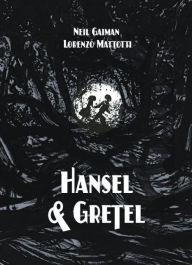
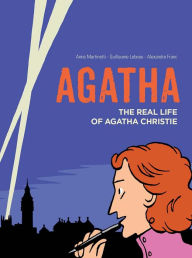
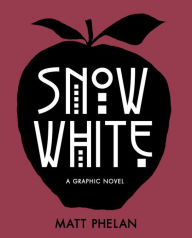
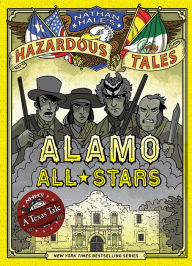

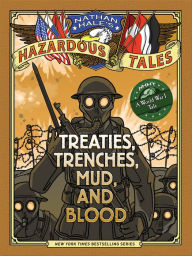





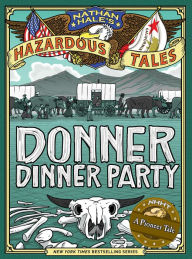
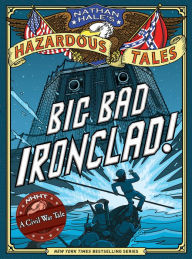
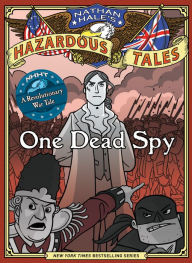
 Dover Publications is mostly known for two things: papercraft books (including coloring books back before they were cool), and reprinting lost literary treasures, mostly in the public domain. That reprint model changed a few years ago, when Drew Ford, then an editor at Dover, started a graphic novel line, reprinting many forgotten classics from the […]
Dover Publications is mostly known for two things: papercraft books (including coloring books back before they were cool), and reprinting lost literary treasures, mostly in the public domain. That reprint model changed a few years ago, when Drew Ford, then an editor at Dover, started a graphic novel line, reprinting many forgotten classics from the […]
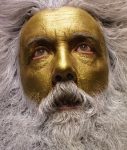 Deep in the grubby sump of one of those so-called ‘Social Media’ sites, there is a clump of aging comics fanboys called The Really Very Serious Alan Moore Scholars’ Group, known to its sad and lonely adherents as TRVSAMSG. When they’re not annotating everything in sight, or calling down ancient evils on the heads of […]
Deep in the grubby sump of one of those so-called ‘Social Media’ sites, there is a clump of aging comics fanboys called The Really Very Serious Alan Moore Scholars’ Group, known to its sad and lonely adherents as TRVSAMSG. When they’re not annotating everything in sight, or calling down ancient evils on the heads of […]
Mighty Jack…
These lists are super helpful for collection development, and you manage to get the flavor of each book and why you liked it in just a few sentences. Well done!!!!